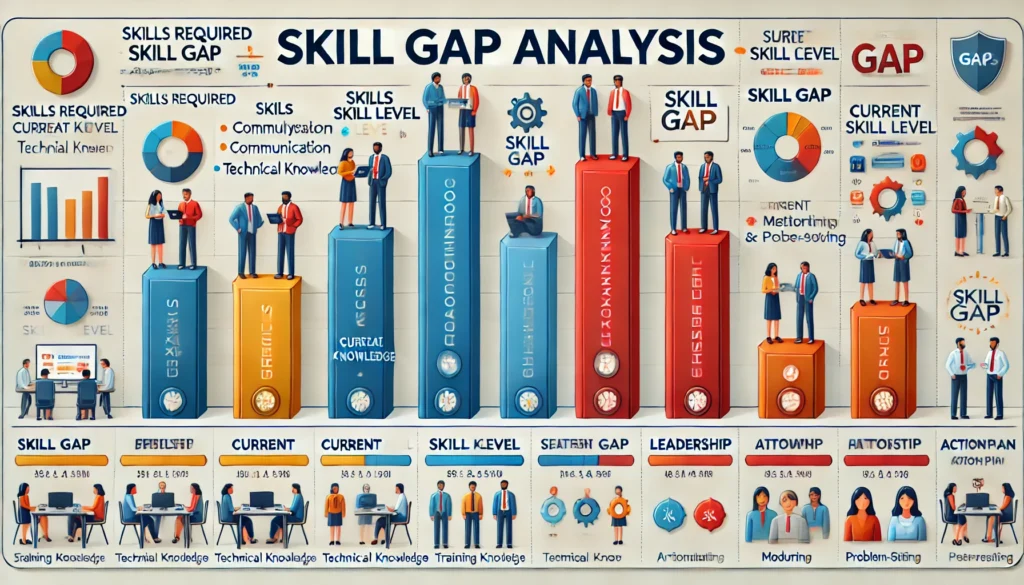Leadership Agility: Mastering Adaptation in a Rapidly Changing World

In an era where change is the only constant, the ability to swiftly adapt has become the hallmark of effective leadership. The global landscape is evolving at an unprecedented rate, driven by rapid technological advancements, shifting market dynamics, and unpredictable socio-political events. Leaders are no longer just tasked with directing teams or executing strategies; they must now embrace leadership agility—the capability to navigate uncertainty, respond to disruption, and foster resilience within their organizations.
But what exactly is leadership agility, and why has it become an indispensable skill for today’s leaders? In this blog, we will explore the concept of leadership agility, its core components, why it matters now more than ever, and how leaders can cultivate this critical trait to lead with confidence and foresight.
Defining Leadership Agility
At its core, leadership agility is the ability to remain flexible and responsive in an environment that is constantly evolving. Agile leaders anticipate change, adapt their strategies, and empower their teams to embrace new challenges with optimism. Unlike traditional leadership models, which often emphasize stability and control, agile leadership prioritizes adaptability, resilience, and forward-thinking.
Leadership agility isn’t just about reacting quickly—it involves three key dimensions:
- Strategic Thinking – Agile leaders assess emerging trends, anticipate future challenges, and recalibrate their strategies to remain competitive.
- Emotional Intelligence – Leading through change requires empathy, self-awareness, and the ability to build trust. Agile leaders are skilled at managing their own emotions and understanding the perspectives of others, creating a supportive environment even amid uncertainty.
- Learning Agility – Agile leaders are lifelong learners who remain curious and open-minded. They continuously seek new knowledge, unlearn outdated practices, and encourage their teams to do the same.
Why Leadership Agility Matters Now More Than Ever
The need for leadership agility has never been more critical than it is today. Several factors contribute to this increasing demand:
- Technological Disruption
New technologies such as artificial intelligence (AI), machine learning, and automation are rapidly transforming industries. From healthcare to finance, digital innovation is reshaping how businesses operate and compete. Agile leaders understand that staying ahead of technological disruption requires not only adopting these innovations but also fostering a culture of experimentation and continuous improvement. - Globalization and Market Volatility
The interconnectedness of global markets means that a crisis in one part of the world can have ripple effects across industries. Whether it’s a pandemic, trade war, or political instability, agile leaders are prepared to pivot and make informed decisions in response to market fluctuations. They view uncertainty not as a threat but as an opportunity to innovate and grow. - Changing Workforce Expectations
The modern workforce is diverse, multigenerational, and more mobile than ever before. Employees today expect flexibility, inclusivity, and purpose-driven work. Agile leaders are adept at creating environments where employees feel valued and motivated, regardless of external pressures. They adapt their leadership styles to meet the needs of their teams, promoting collaboration and engagement. - Sustainability and Social Responsibility
As businesses face increasing pressure to address climate change and social inequality, leaders must adopt agile approaches to sustainability. Leadership agility enables leaders to balance profit with purpose, ensuring their organizations remain ethically responsible while pursuing growth.
How to Cultivate Leadership Agility
While some leaders may naturally possess agility, it is a skill that can be developed and strengthened over time. Here are five strategies to cultivate leadership agility:
- Embrace a Growth Mindset
Leaders with a fixed mindset believe their abilities are set in stone, while those with a growth mindset see challenges as opportunities to learn and improve. Cultivating a growth mindset involves embracing feedback, learning from mistakes, and continuously seeking out new knowledge. - Stay Informed
Agility requires staying ahead of the curve. Agile leaders are proactive about staying informed on industry trends, emerging technologies, and global events. Regularly reading industry reports, attending conferences, and engaging in thought leadership can help leaders anticipate change and make better-informed decisions. - Foster Resilience in Teams
Agility isn’t just an individual trait—it extends to the entire organization. Leaders who foster resilience within their teams create environments where employees feel empowered to take risks and learn from failure. This can be achieved by encouraging collaboration, providing psychological safety, and celebrating incremental successes. - Practice Scenario Planning
One of the key aspects of agile leadership is the ability to anticipate multiple futures. Scenario planning involves developing various “what if” scenarios and thinking through potential responses to each one. By preparing for a range of possible outcomes, leaders can remain nimble in the face of uncertainty and make strategic adjustments as needed. - Develop Emotional Intelligence (EQ)
Leadership agility is deeply rooted in emotional intelligence—the ability to recognize and manage emotions, both in oneself and others. EQ helps leaders navigate difficult conversations, build stronger relationships, and foster a sense of trust and cohesion within their teams. To develop emotional intelligence, leaders can engage in self-reflection, seek out feedback, and practice mindfulness.
Examples of Agile Leaders in Action
Let’s look at a few real-world examples of leadership agility:
- Satya Nadella (CEO of Microsoft)
When Satya Nadella took over as CEO of Microsoft, he transformed the company’s rigid culture into one focused on innovation, cloud technology, and cross-platform collaboration. Nadella’s agile leadership approach enabled Microsoft to stay relevant and thrive in a rapidly changing tech landscape. - Jacinda Ardern (Former Prime Minister of New Zealand)
Jacinda Ardern demonstrated exceptional leadership agility in her response to the COVID-19 pandemic. By acting quickly, communicating clearly, and empathizing with the public, she successfully navigated New Zealand through a global crisis while maintaining public trust. - Elon Musk (CEO of SpaceX and Tesla)
Known for his bold vision and willingness to take risks, Elon Musk exemplifies leadership agility in his pursuit of innovation. Musk’s ability to pivot and adapt has allowed him to disrupt industries such as space exploration and electric vehicles, proving that agility is key to leading visionary ventures.
The Future of Leadership: Agility is the Way Forward
As the world continues to change at a rapid pace, leadership agility will only grow in importance. Organizations that fail to adapt will find themselves left behind, while those led by agile leaders will not only survive but thrive.
Agile leaders will guide their organizations through periods of disruption, fostering cultures of resilience, innovation, and inclusivity. By embracing continuous learning, emotional intelligence, and forward-thinking strategies, today’s leaders can ensure they’re prepared for whatever the future holds.
In the end, leadership agility is not just about responding to change; it’s about driving it. Those who can master this skill will lead the way into a brighter, more dynamic future.






Responses